OpenSees Cloud
OpenSees AMI
Two Fibers Explain So Much
Original Post - 06 Feb 2022 - Michael H. Scott
Show your support at Buy Me a Coffee.
In a previous post, I asked how well we can capture the moment-curvature response of a rectangular section with EPP material using different integration methods with two fibers. For flexural response, two is the minimum number of fibers necessary to satisfy section equilibrium–one fiber for tension, the other fiber for compression.
The previous post showed moment-curvature responses based on five integration methods. Here is the correct association of section response (1-5) with integration method:
- Lobatto
- Gauss
- Radau
- Newton-Cotes
- Midpoint
This post will show the apparent yield curvature and computed yield moment and flexural stiffness for each integration method. The closed-form solutions for these quantities are known from the material properties and section dimensions:
- Yield curvature, \(\kappa_y=2\varepsilon_y/d\)
- Yield moment, \(M_y=\sigma_y(bd^2/6)\)
- Flexural stiffness, \(EI=M_y/\kappa_y=E(bd^3/12)\)
First, midpoint integration, the implementation in OpenSees. The profiles of strain, stress, and stress resultants through the section depth are shown below at the point where the fibers reach their yield strain. Habits picked up teaching reinforced concrete design die hard as I’ve drawn the strain on the compression side. No big deal.
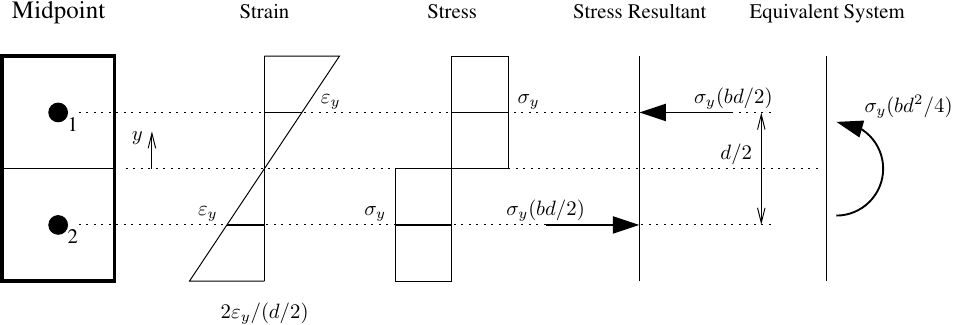
In addition to the computed yield moment being 50% higher than the closed-form solution, the apparent yield curvature is twice the expected value. The resulting flexural stiffness is E(bd3/16).
Two fiber integration with Gauss, Lobatto, and Newton-Cotes follows the same calculations, but the apparent yield moment, yield curvature, and flexural stiffness differ based on where the stress-strain response is sampled in each fiber.
With Gauss integration, the sample locations move away from the center of the section a little bit, leading to a lower apparent yield curvature and higher apparent yield moment compared to midpoint integration. However, the resulting flexural stiffness matches the exact solution, E(bd3/12).

Moving on to Lobatto integration, the sample locations move to the edges of the section. Although we get the correct yield curvature, the yield moment is three times the expected value and the flexural stiffness is E(bd3/4).
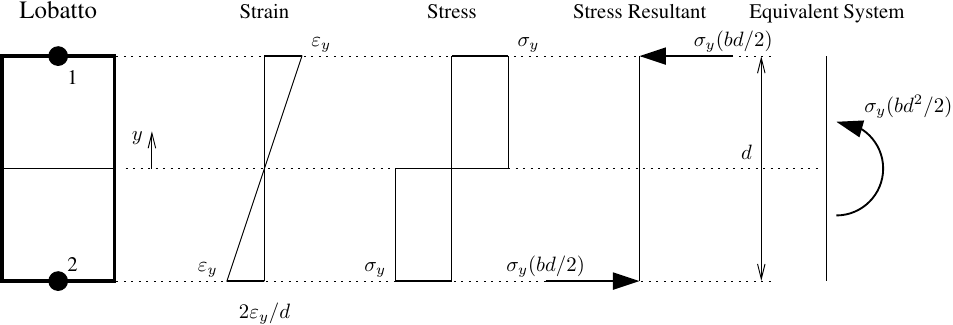
The sample locations are close to the center of the section with open Newton-Cotes integration. The apparent yield curvature is three times the expected value but the yield moment is correct. However, the apparent flexural stiffness is E(bd3/36).
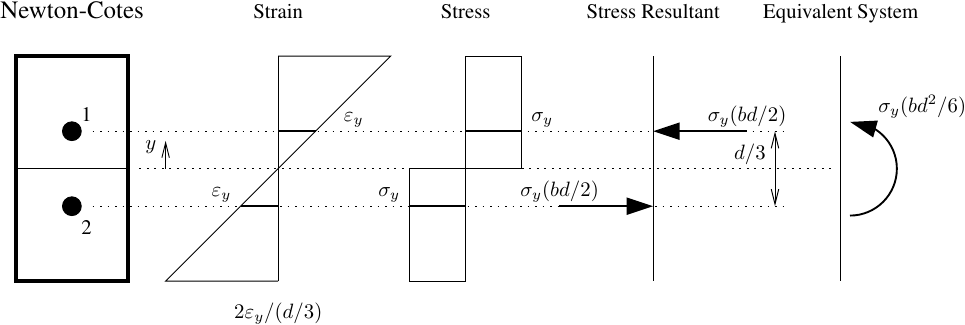
The section response gets interesting with Radau integration due to asymmetry of the sample locations and areas. At the instant where the fiber at the edge of the section yields, the strain in the other fiber is one-third of yield. However, the Radau integration gives the correct yield curvature, yield moment, and flexural stiffness.
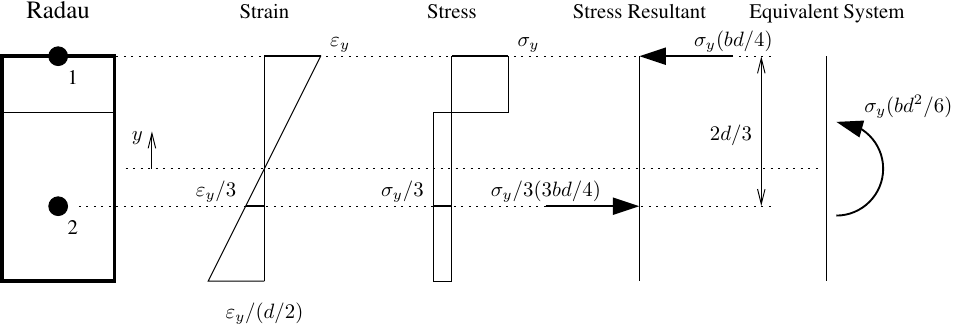
As the imposed curvature increases, the strain in fiber 1 increases but the strain in fiber 2 remains unchanged, causing the neutral axis to move away from the center of the section. This introduction of section axial deformation (strain at the center of the section) is the only way to satisfy equilibrium of the tension and compression stress resultants with EPP material behavior.

If we keep the neutral axis fixed at the center of the section by constraining the section axial deformation to be zero (fixing the horizontal DOF of the free node in the zero length section model of the previous post), fiber 2 will yield when fiber 1 reaches three times the yield strain. However, the section develops a large axial force– \(\sigma_y(bd/2)\), half the plastic axial capacity–due to the constraint imposed on the axial deformation of the section.

The moment-curvature response for Radau integration with zero axial deformation looks pretty good compared to the exact solution.
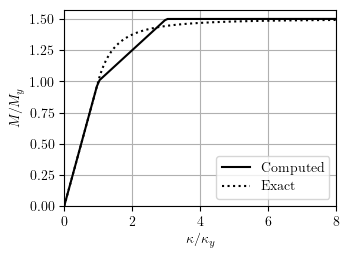
To be clear, I am not advocating for fiber section integration defined by anything other than midpoint integration. This exercise with two fibers was nothing more than a demonstration of numerical integration for section response.
As an added bonus, the Radau integration with section axial deformation constrained to zero is a simple example of what can happen when using fiber sections in a beam that is part of a rigid diaphragm. As the neutral axis shifts during flexure, a large axial force can develop because the rigid diaphragm does not allow axial deformation of the beam.